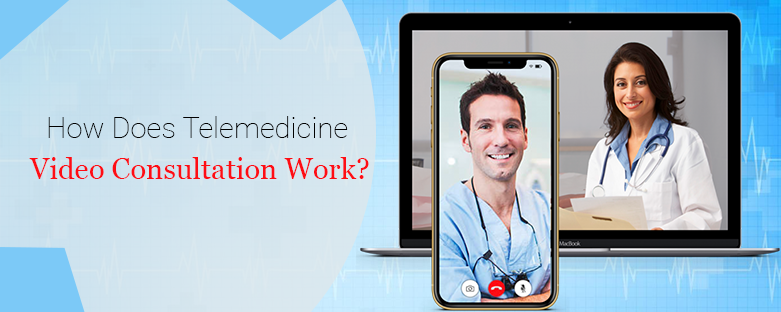How Does Telemedicine Video Consultation Work?
Who wants to go to the medical office for just their daily routine checkup? No one wants to go there. No one wants to sit in the waiting room and do not want to wait for the doctor for many hours just to consult for a while. No one wants to travel to see a doctor. Telemedicine video consultation is the best solution for doctors and patients. Here we’ll discuss that How does telemedicine video consultation work? By telemedicine, patients can save their time, cost and more. With the help of telemedicine, patients can be avoided the risk of coronavirus.
You get a consultation or an appointment with your doctor over the phone or via an online video network such as Skype, FaceTime, or Zoom. Think of it with your health care provider as a “virtual visit.”
Video-consultation is a specific form of telemedicine that uses technology to provide remote real-time visual and audio patient evaluation. In the current study, we set out to determine whether VC is feasible for oncology patient evaluation, monitoring and management.
Video Consultation provides doctors and their patients with versatility and ease, enhancing access for those with separated, less mobile or busy schedules.
The working process of telemedicine video consultation is easy. Video consultation is the use of technology that makes remote healthcare (telehealth). Basically, it makes it possible for doctors to use a tablet or smartphone to treat patients whenever appropriate and wherever the patient is by video consultation.
Many hospitals are urging patients before going to a doctor to use virtual urgent care for a consultation. For patients who believe they have Covid-19 but aren’t ill enough to need hospitalization, this is particularly relevant. Video Consultation helps physicians to screen patients without the possibility of spreading the infection, and patients can be treated for their symptoms easily. (There is no proven cure for the virus itself at present.)
For emergencies such as heart attack or stroke, cuts or lacerations, or broken bones that include X-rays, splints, or casts, Telemedicine Video Consultation is not suitable. Anything that needs urgent, hands-on treatment should be treated in person.
Here are a few of the cases in which the conventional health care system can be a perfect alternative to telemedicine:
- Diagnosis of common medical conditions such as headache, sore throat, pain in the back, stomach problems.
- Inquiries about different medical conditions for home treatments.
- Check-ins or follow-up with chronic care management technology for following treatment.
- Faster refill of medical medications for the short term.
- Vacations, evenings, late night or some other condition where it is not possible to obtain routine medical treatment.
- Inability of patients to leave the house because of sickness or adverse weather conditions
You can receive medical treatment in various ways depending on what your doctor provides. Two of the most prevalent are:
- A patient portal: A patient portal helps you to send and receive emails from your doctor or nurse with the convenience of a username and password, ask for prescription refills, and set up appointments. Your physician will also share the findings of your laboratory or imaging test and tell you what they say. This is also easier than waiting to get on the phone to speak to them.
- Digital appointments: Via a phone call or video conference, some doctors will let you make an appointment. These meetings with mental and behavioural health providers and urgent care centres may also be held, as well.
Requirements for a Set-Up?
Your organization should In order to provide virtual consultations by telemedicine video conferencing, your organization should:
A suitable space for consultation including:
- Privacy Security Arrangements (ex. screens, doors)
- Nice lighting
- Plain decoration that is not going to disturb
- Access to medical devices which may be needed;
- Disturbance control measures (e.g. ‘do not interrupt’ signs); and
- Access as a back-up to a phone.
- Appropriate hardware (i.e. computers);
- Appropriate software for video;
- A webcam of high quality;
- A high-quality (built-in or external) microphone with echo-cancelling properties
- Access to technical assistance and guides for troubleshooting.
Who can provide telemedicine video consultation?
By means of telemedicine, only registered medical practitioners registered in the State Medical Register or the Indian Medical Register can provide video consultation on telemedicine.
The guidelines note that consultation should not be anonymous, and the identity of both the patient and the practitioner must be known to each other. The medical professional must check and confirm the identity of the patient by name, age, address, email address, telephone number, registered ID or some other means of identification.
Practitioners are also expected to begin video consultation on telemedicine by telling patients of their names and qualification. On prescriptions, websites, WhatsApp numbers, e-mails and receipts, they can display their identification number.





I wanted to learn about telemedicine video consultation, at this blog I got detail information that how video consultation work. nice post!
This blog has a fantastic UI experience with an informative post. Now I understand entirely how video consultation works with the help of your article. Thanks
Great post on telemedicine!